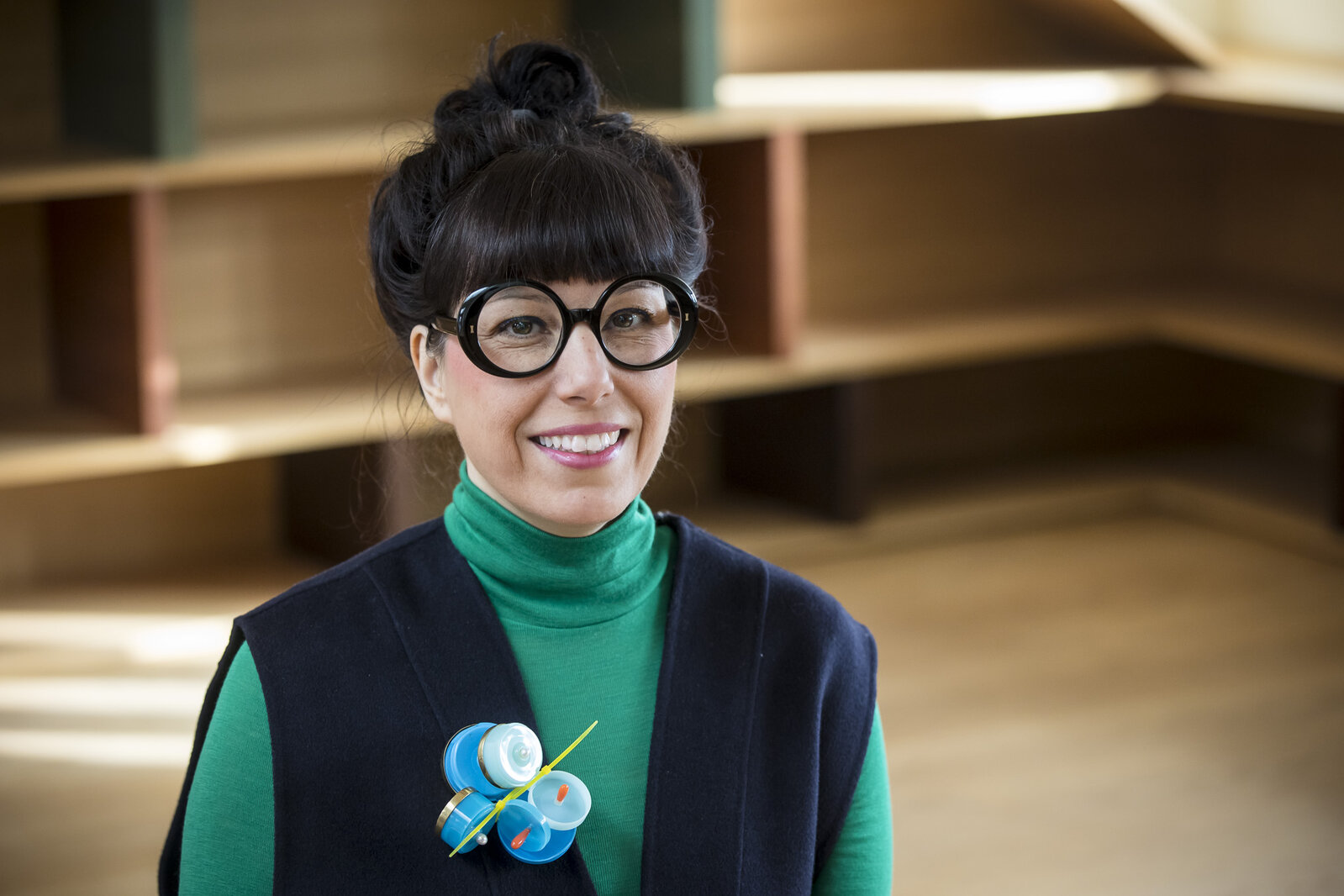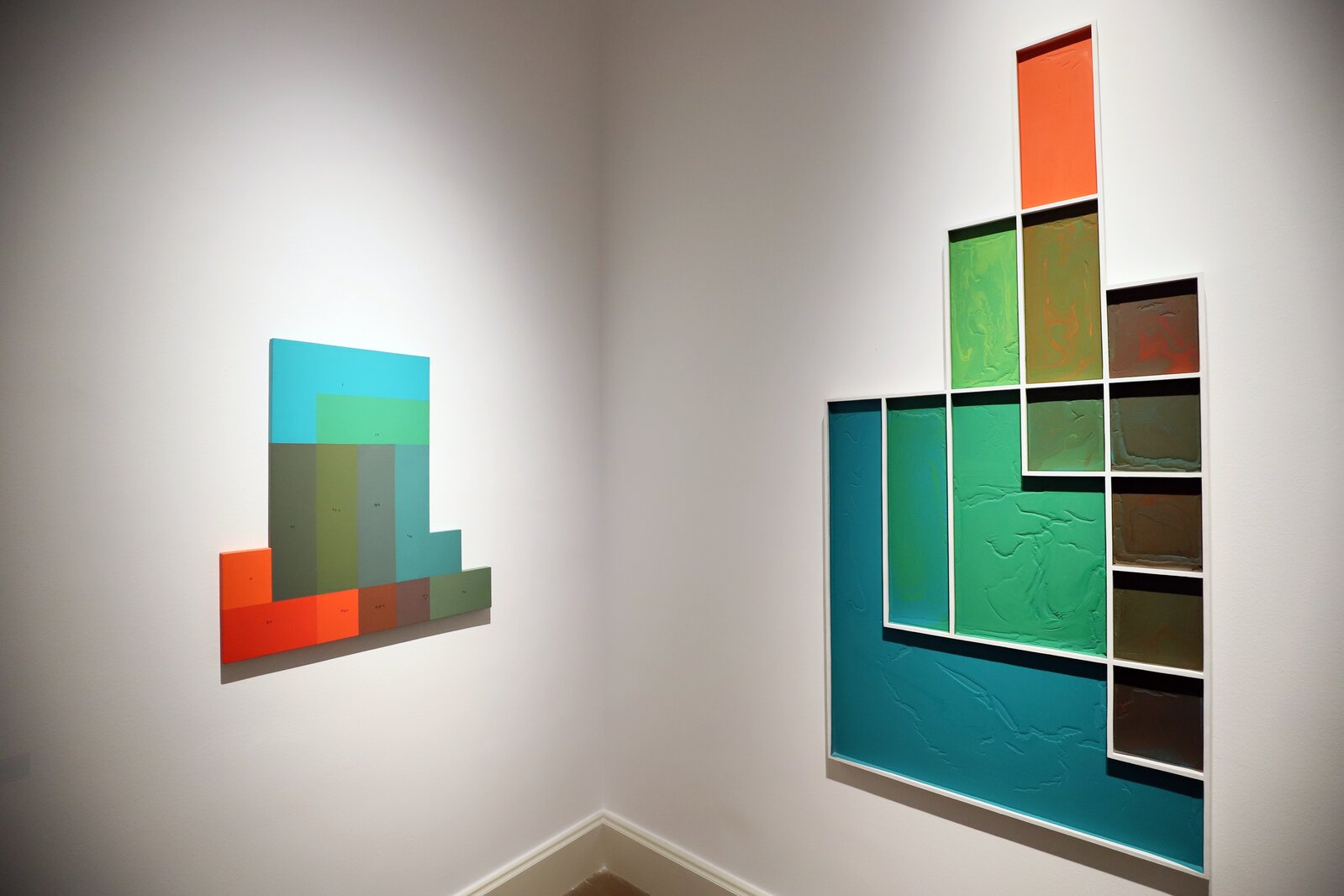Over 6 decades of creative activity enclosed in 12 rooms - An interview with curator Mónika Zsikla on the Dóra Maurer exhibition in Balatonfüred
When we think of the neo-avant-garde in Hungary, Dóra Maurer's name certainly comes to mind as a prominent artistic figure of the generation. Her exhibition The Thematisation of Structure offers a glimpse into many aspects of her multifaceted art,which will be on display at Vaszary Gallery in Balatonfüred until 7th January 2024. We asked Mónika Zsikla, the curator of the exhibition, for more details.

Zsikla Mónika I Fotó: Purger Tamás
First of all, can you tell us about the concept behind the exhibition?
Dóra Maurer's exhibition presents a diverse selection of the artist's early graphic works, conceptual photography, films and paintings. The thematic focus of the exhibition is on the so-called hommage works of the artist's oeuvre, and a tour of the 12 rooms of Villa Vaszary reveals the technical and media diversity of Dóra Maurer's creative work spanning over more than six decades. Passing through each of the rooms, the viewers encounter not only the questions that have determined the development of the oeuvre, but also the multifaceted interplay of art history references, the various possibilities of presenting temporality, and the dilemmas of visualisation and (age) relativity of stories and narrative structures.
Dóra Maurer is best known for her colourful and geometric compositions, but as you've mentioned, this exhibition also includes several photographic and graphic works. Are there any works in the exhibition that we haven't seen before, or which have a particular story to tell?
Dóra Maurer's work is fairly well researched and, in the case of a frequently represented oeuvre, it also means that there is little to surprise the public with that is completely unknown. One such surprise was when, in the second half of 2017, my former teacher Emese Révész curated a comprehensive exhibition and an accompanying academic catalogue of Dóra Maurer's graphic work spanning decades at the Hungarian University of Fine Arts. The exhibition also included mimetic etchings made in the early period of Maurer's oeuvre (1963-1969), which are mostly referred to in the literature as surrealistic, but which Dóra called "psychorealism". It was fantastic to see these early works.
In the exhibition in Füred, I wanted the staging to give a sense of the path that Dóra's art has taken to the 'programme' painting that the public in Hungary is most familiar with, so in each room you can see early representational prints, conceptual prints, photographic works and films.
In Dóra's highly systematically built oeuvre, a special group of works are the so-called "colour pools", several of which paraphrase Lucas Cranach's painting The Fountain of Youth. It is a dream come true to have been able to acquire one of these colour pools for the exhibition.
What do we know about this colour pool?
The colour pool in the exhibition, like the others, has a special story that Dóra once shared in an interview. "The painting The Fountain of Youth by Lucas Cranach the Elder has haunted me for a long time, even over the last five to ten years. In the middle of it is a large pool, painted in perspective, in which ladies are bathing and swimming back and forth, reverting to their youthful looks. They're brought in by their husbands on wheelbarrows. The husbands remain old, and the young men are waiting in the bushes for the young women to make love. So it was this pool and its imaginary colour - because I only knew it from a small grey reproduction - that really struck me", Dóra recalled in a conversation with Tünde Topor (Tünde Topor: You always work with clearer forms, not all smeared up...). Apart from its subject matter, what made Cranach's work enigmatic was the colourlessness of the small grey reproduction, the lack of colour, which the artist filled first with his imagination and later with the surfaces of the monumental colour pools, which take Cranach's architecture further in the context of minimal art.

Fotó: Vaszary Galéria, Martinovics Tibor
At Vaszary Gallery, the so-called quasi-paintings are also on display. What are these?
Since the 1980s, a basic and central motif of Dóra Maurer's creative practice has been a group of works operating with enlarged details (fragments) of her system diagrams and marked as quasi-images thematising shift as a phenomenon. As the title emphasises, the pieces in the series are not images but quasi-images: the continuously moving details of a whole that cannot be captured by the eye, and cannot be visually represented. While the earliest quasi-pictures focused on displacement as a phenomenon, the iconic 1982 Buchberg space painting project already explored the spatial extensibility of the basic motif, its transposition onto curved surfaces. Similarly, Maurer's works in the exhibition, such as the Profanides series of 1984-1985, explore spatiality as implied by colour strips. The images in this series are overpainted photographs in which the human figures are almost enveloped by strips of colour.
How did Maurer use mathematics (a raster/grid system) in her works? Can we see works in the exhibition that show this particular method?
In 1972, Dóra, in addition to the photographic medium, was exploring, more and more, concepts like interchangeability, substitutability, quantity, unity, and the importance of countable and uncountable qualities in the works she was making at the time. The so-called magic square became an essential motif in the works of this period, and it is the main prefiguration, organising principle and basic structure of the Quantity Plates from 1972 onwards. The systematic shifting and movement of the motifs on the Quantity Plates led her to the System Diagrams, which are based on the systematic, step-by-step movement and shifting of planes and fields of standardised colour placed on a grid, thematising the relationships, dynamic correlations and interactions of colours, thus creating a complex, dense system of juxtapositions, contrasts and harmonies. The exhibition includes several works that operate using Dóra's basic structure, the so-called 'grid system', the elements of which slide over each other. It was also an important curatorial ambition for me that the audience should understand the basic modular system that Dóra has been working with for decades, and so the exhibition space also includes animation that illustrates this modular system in a very visual way. The animation was created in 1997 by Dóra together with her alumnus András Kapitány, with whom she also co-produced Displacements.
